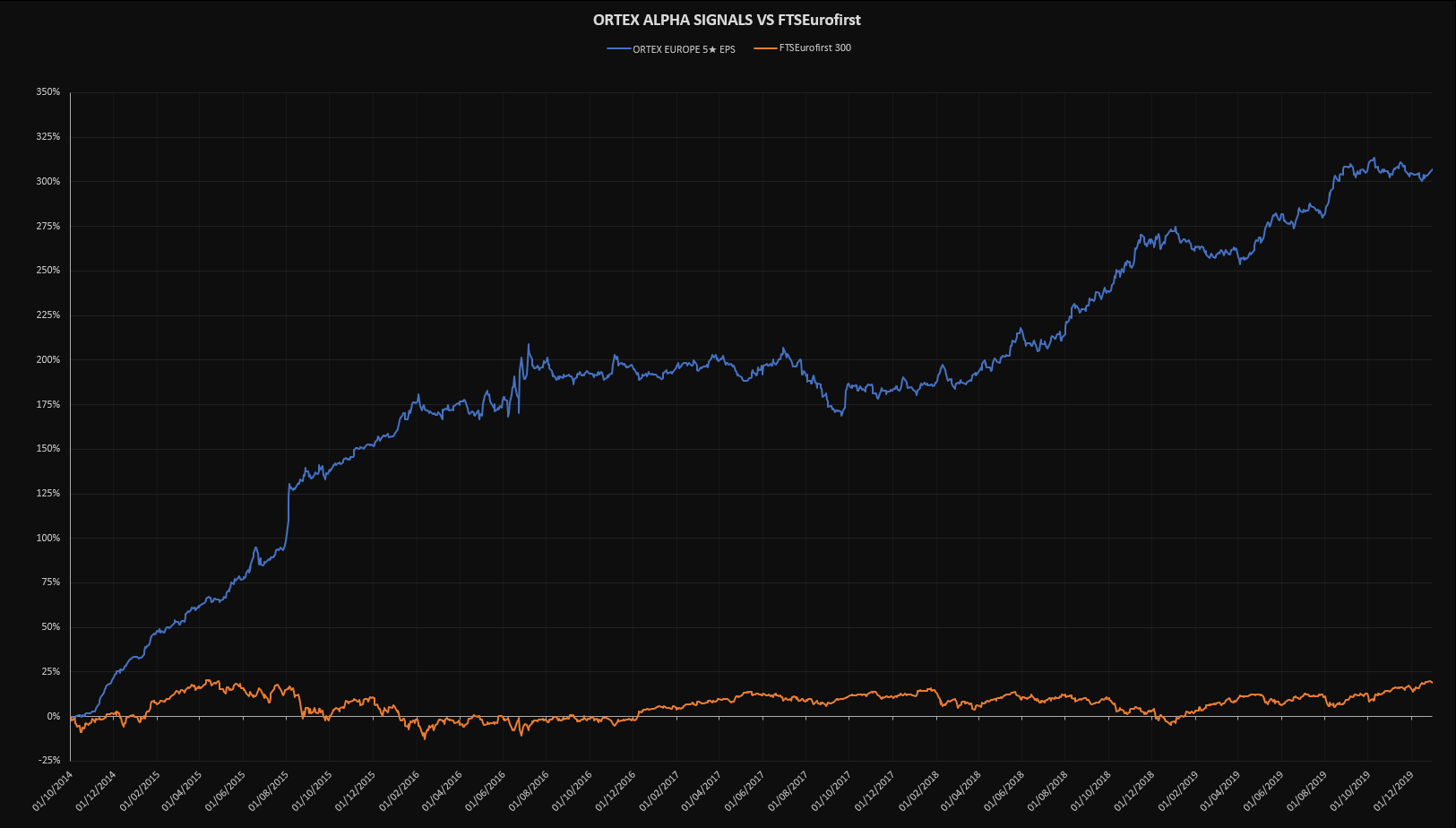Alpha Signals
ORTEX trading signals: What they are and how you can use them to make an average of 18% per trade
Users of ORTEX will be familiar with our Alpha signals. There are seven of them – namely the RSI, MACD, STOCH, EPS, PE and Short Increase signals, plus the ORTEX signal, which we create based on a combination of information present in the others.
All of our signals are based on the fact that some values are rare or extreme. To generate the signals we first create a set of statistics as our starting assumption about what an anomalous event looks like. From this, we run a machine learning model on all the relevant historical data points. This is done for every stock, every night. When it finds something statistically significant and above a threshold in expected return – we have a signal.
All of our signals are produced overnight based on the very latest data available at the time. We then publish the signals every day, before the markets open.
The EPS Signal
Some of our signals are more complicated than others, and the EPS is one of them.
The EPS signal considers data gathered from analysts. However, we knew that to produce a really strong signal we first had to have a comprehensive understanding of individual analyst performance. We wanted to know how accurate any analyst was, per company, on any given number they produce. The problem, however, was that those statistics weren’t readily available. So we created them ourselves.
We started by pulling in the analysts’ historical EPS, Target Price and Recommendations, plus all other numbers they produced. We compared this data to the actual outcome of the company released numbers and the development of the share price. From this, we were able to clearly establish how accurate an analyst was. We then compared analysts against each other, per stock and per sector to be able to tell us who was best at predicting all the individual numbers for any given stock…. Or alternatively if the stock itself couldn’t be accurately predicted. (By the way, we decided to make the analyst ratings public as well, so you can see them when you log in).
The EPS signal is our best performing signal. We give all our signals a star rating out of 5 (which is based on their relative significance and takes in to account their historical return and
success) and our 4 star and above EPS signals return – on average – 18% over 66 days for companies covered by more than 7 analysts.
Performance
- From 2014 in Europe alone, in larger companies covered by more than 7 analysts, ORTEX has published 596 ‘4 star’ and above rated signals in companies with more than 7 analysts, with an average return of 9% over 37 days, or annualised at 62%.
- 209 of these were from our market-leading, top-performing EPS signal. As mentioned above, these 4 and 5 star signals yielded an average return of 18% over 66 days achieving 68% annually.
Per trade stats are great, but after all, if too many signals happen at the same time, you may not be able to stretch your investable capital far enough to go into all positions. So we have also back-tested the EPS signals as a trading strategy. To keep it simple, we put a trading strategy together that trades 8% of available capital on each trade. No stop losses, no take profit levels, just buy on the signal date and sell on the recommended sell date.
- From our first EPS signal in October 2014, through to the end of 2019, we have had a return of 307%, with the FTSEuroFirst 300 increasing by 18.8%
If you want to investigate all of this data further, have a look at the full list of signals we used here;
List of signals we used
